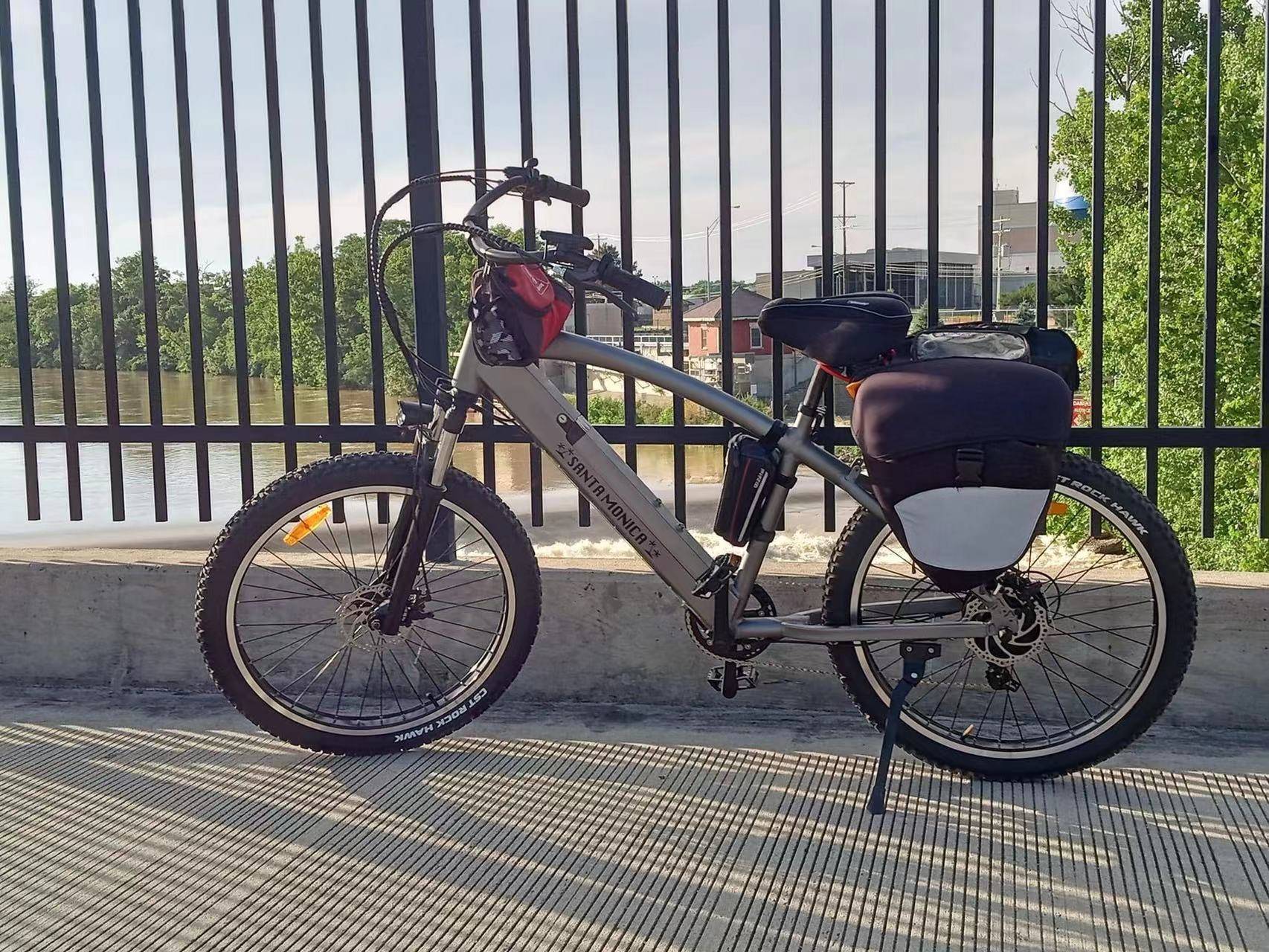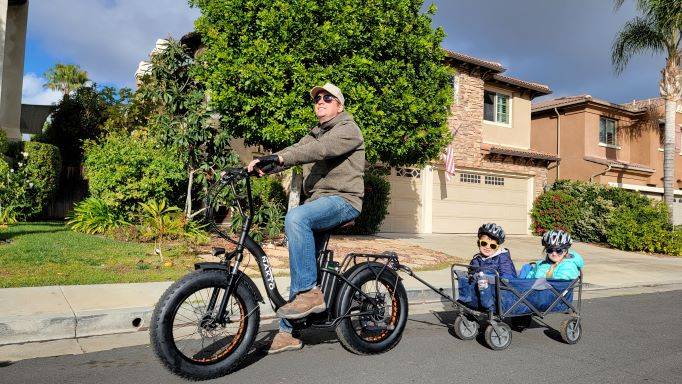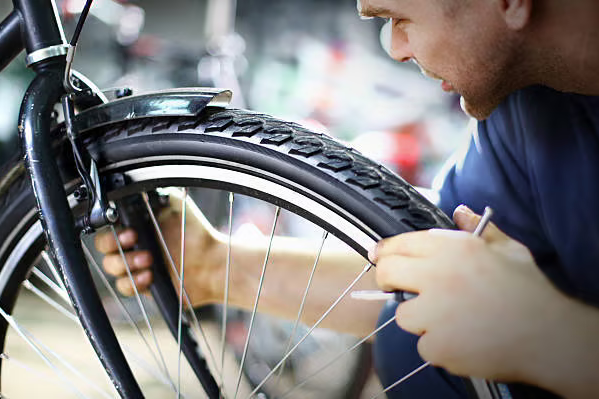
How to Pump an Electric Bike Tire in 4 Easy Steps?
Correct inflated tires will allow you to get the most out of your e-bike trip. In addition, keeping adequate tire pressure assures a smooth and safe ride no matter what twisting road or rough route you're on.
Luckily, as long as you know what's happening, pumping a bike tire is a rather basic and doable process. We'll go through the various valves, bike pumps, and strategies to inflate your bike tires.
Keep in mind that if you suspect any flat tire or a gradual leakage, you need to change the tube. If your bike tires require additional air, follow these four steps for a quick and straightforward solution.
Following these procedures will have your bike ready in no time.
Get $50 off your first order
Sign up for special offers and updates
Step 2: Determine the Pressure You Need

The next step is determining the best air pressure range for your tires. This data is frequently printed or stamped on the side of your tire. PSI (Pounds per Square Inch), a technical unit of measurement, may be used.
If your tire does not have this (most do), then follow these basic guidelines:
80-130 PSI for road bike tires
Tire pressure on a cruiser bike or hybrid: 40-70 PSI
Tire pressure for mountain bikes: 25-35 PSI
Stick with the lowest end of the PSI range if you're a lightweight rider; if you're heavy, go higher.
NOTE: It is critical to highlight that you should NEVER use a vehicle tire air machine, such as those available at repair shops, to fill your bike tires with air since the high pressure might blow your tire out. Always use a classic hand pump or an electric bicycle air pump when filling your bike tires.
Your air pump may include a PSI gauge or readout to estimate tire pressure while you fill your tire. If not, you can acquire an extra gauge to measure tire pressure correctly. Ensure your tires are properly inflated to avoid blowing out your tire while riding.
Why is it necessary to frequently inflate your tires? Consider the following reasons:
Enhances grip
Traction/grip enables comfortable and trouble-free riding. It makes your tires adaptable, allowing them to be utilized on smooth and rocky terrain. In addition to the tire pressure, you should inspect the tread patterns on the bike tire. Traction will be compromised if it is heavily used.
Ensures safety
A blown tire can lead to significant consequences. Your riding performance may suffer if you do not apply enough pressure to your bike tire. It can potentially cause traffic accidents. A flat tire is unsuitable for usage on various surfaces.
It will probably throw off the balance of your bike and prevent it from performing well. A poorly inflated tire will also make steering difficult.
Provides comfort
If you want to ride more comfortably, ensure your bicycle tire is filled correctly. The proper tire pressure provides comfort when cycling. With the proper pressure, you can ride your bike effortlessly and confidently.
Avoids flats
An improperly inflated tire is a primary cause of flats when riding. A flat tire would be pretty inconvenient, especially if you were in the middle of a long-distance trip. As a result, inspecting your tires before going for a ride is essential.
Bad performance
Bad tires mean poor riding performance. The responsiveness of your bicycle wheels will be substantially diminished if your tire is underinflated. Consequently, you won't be able to maximize your bike's performance on the road.
Step 3: Choose the Right Pump

As we explained in Step 2, different air pumps will have different characteristics. Floor Pumps, Mini Pumps, Bike-mount pumps, and Co2 inflators are standard electric bicycle tire pumps. Choosing the most exemplary pump is critical since you want confidence in your equipment and start riding as soon as possible.
Floor pumps are the fastest sort of tire pump and hence ideal for use with a fat tire e-bike that requires a lot of air. They are simple to use and make good use of your time. Floor pumps may be too large to transport on a long bike ride. Consider a portable air pump or a bike frame-mounted pump, which may take a bit longer if the tire is severely deflated. Finally, there are CO2 pumps that are quick yet expensive if used frequently.
Screw off the valve's cap
Presta and Schrader's valves frequently have plastic coverings that must be removed. Keep the cap in a secure location, like your back pocket. Use the cap to prevent debris and dirt from the valve opening.
Remove the cap and the lock screw from your Presta valve. Turn the Presta valve several times to open it before attaching the pump. If you have a Schrader valve, you do not need to take this additional step.
Step 4: Pump Your Electric Bike Tire

Once your pump is connected, depending on the type, you should experience some resistance while pumping. Of course, you won't be physically pumping with an electric pump, but you should be able to discern whether or not air is filling the tire.
Checking the pressure gauge is one technique to see if you're doing it correctly. An empty tire will have a pressure of roughly zero, and you'll be climbing. Depending on how quickly your arms fatigue, a small to medium-sized hand pump will likely take 5 to 10 minutes to complete a road bike's wheel!
You may feel the tire with your hands if your pump does not have a pressure gauge. If you press it in with your fingers on a road bike, you shouldn't be able to press in that far. On the other hand, a mountain bike should be able to press in around a centimeter.
Always inspect your tires before you ride. This may be as simple as gently squeezing them with your hand or utilizing a pressure gauge to verify you're getting the most refined ride possible. Having a CO2 cartridge in your jersey pocket or bike is helpful when your tires require a little more air while riding.

How to Pump a Bike Tire FAQ
How can I determine what kind of tire valves my bike has?
A Presta valve is opened and shut using the lock nut at the top of the valve stem. Depending on your bike pump, a Presta valve adaptor could be needed. Both road bikes and mountain bikes commonly have Presta valves. Presta valves come in a variety of stem lengths and are generally narrower.
In BMX bikes, Schrader valves are frequently observed. This valve resembles the one used in car tires. The majority of bicycle pumps can operate on a Schrader valve without an adapter.
What pressure should I put on my bicycle tires?
The minimum and maximum pressures of your bicycle tires should be indicated on the side. Use the manufacturer's recommendations to determine the correct psi.
For cruiser bikes or hybrid tries, the ideal tire pressure is 40–70 psi, while for mountain bikes, the pressure should be 25–35 psi.
When deciding what tire pressure is appropriate for you, take into account your weight. If you're a light rider, keep your psi at the lower end of the advised range. Use the higher psi if you are heavier.
How frequently should I check the tire pressure on my bike?
Checking the tire pressure will affect how often you ride your bike. Regardless of how frequently you ride, it may be advantageous to routinely check your tire pressure. Some people check the tire pressure before each journey. Others regularly check their tires' pressure.
Which tire pump is best for bicycles?
Whether you need to fill the tires once a month or every day before your bike journey, a floor pump is a great choice to store in the garage and use whenever you need it.
Overall, floor pumps have a higher capacity and can adequately pump bike tires to a maximum tire pressure of about 160 psi. Presta valves can be installed in the narrower nozzle hole.
You may store a hand pump in your car or take it with you on a bike ride. These are helpful if you need to pump your tires while driving.
Wrap-up
When you get back to your bike, fold it up and ride. Your riding will be noticeably improved.
Some electric bikes have 16-inch tires, while others have 20-inch tires. The tire size is generally written on the tire's sidewall. When inflating the tire, there will be markings on the sidewall's rubber indicating where to stop pumping. It is essential to maintain your bike because if you have a flat tire and your tube is not sufficiently inflated, it will be more difficult to push/roll your electric bike than an inflated one.
Conclusion

If you do not have an inflator, inflating your tire isn't as difficult as it may appear. You can easily create an inflator by taping a bicycle pump to your tire's valve and pumping it up by hand. Electric bikes are great because they allow you to ride long distances without tiring.
This article's information is given in the most straightforward manner possible. Most bike pumps are not overly complex, and with a little trial and error, you would be able to know how to use them. So, please feel free to experiment with this knowledge and see how you fare.

